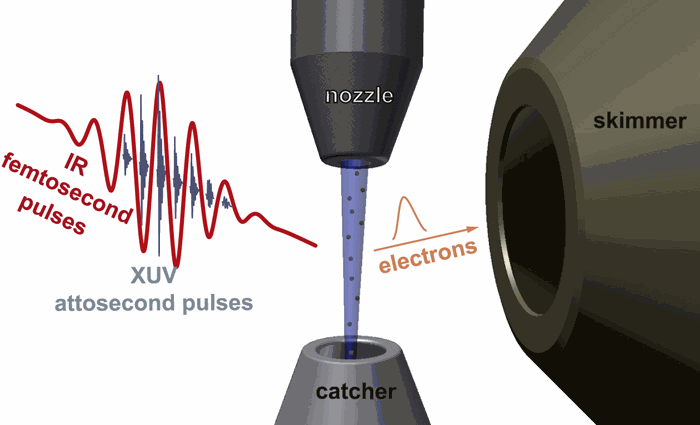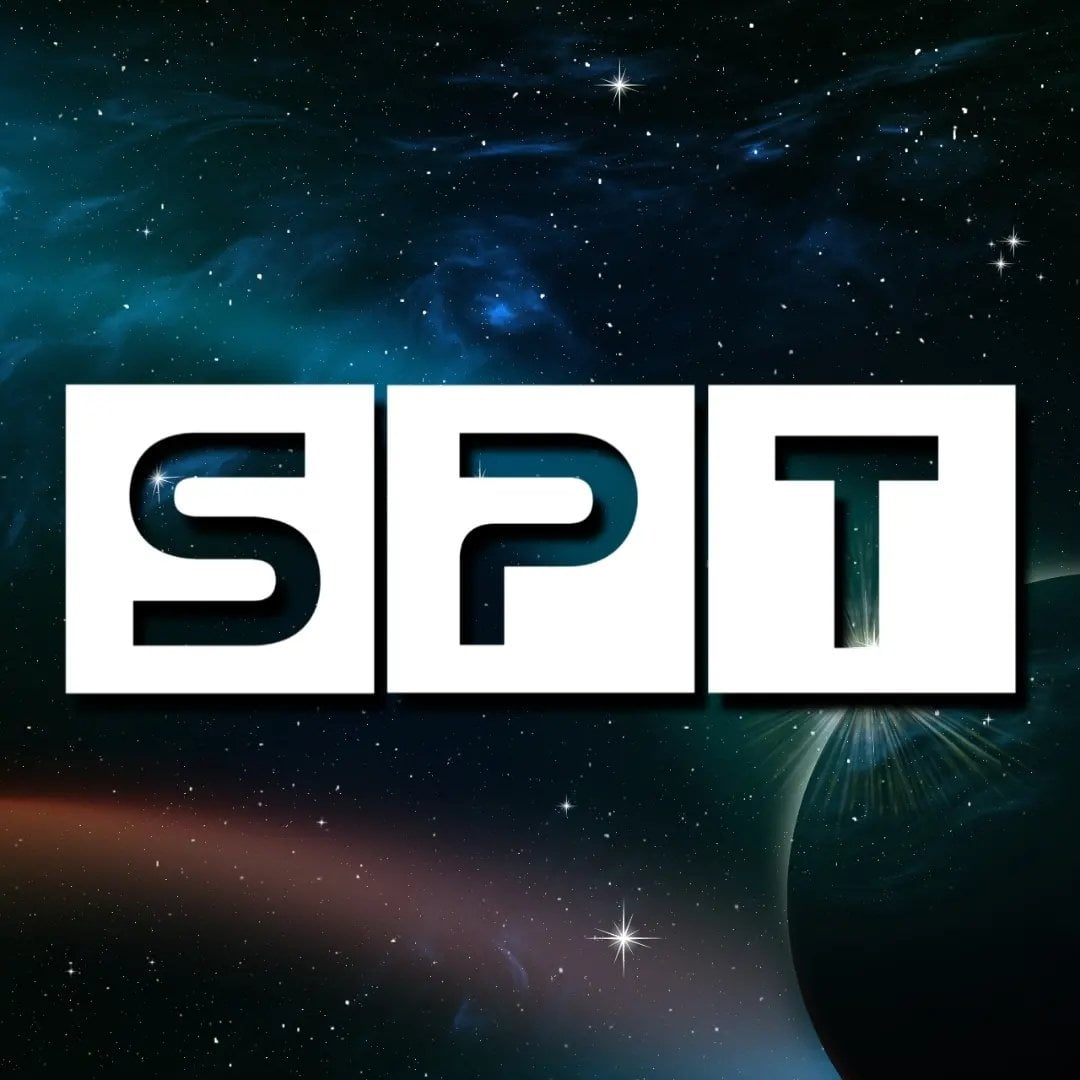Attosecond Spectroscopy is a part of Spectroscopy which is a technique that uses light to study the properties and behavior of matter. By shining light on a material and measuring how it is absorbed, emitted, or scattered, we can learn about its structure, composition, and dynamics. Spectroscopy has been a powerful tool for exploring the physical, chemical, and biological phenomena in nature, from the atoms and molecules to the stars and galaxies.
However, there are some processes in matter that are too fast and too complex to be captured by conventional spectroscopy. These processes involve the motion and interaction of electrons, the negatively charged particles that orbit the nuclei of atoms and form the bonds between atoms in molecules. Electrons are the key players in many quantum phenomena, such as superconductivity, magnetism, and light-matter interaction. To fully understand and control these phenomena, we need to be able to observe and manipulate the electrons in real time and with high precision.
This is where attosecond spectroscopy comes in. Attosecond spectroscopy is a new technique that uses extremely short pulses of light to probe the ultrafast dynamics of electrons in matter. An attosecond is one billionth of a billionth of a second, or 10^-18 second. It is the natural time scale of electron motion in atoms and molecules. By using attosecond pulses of light, we can capture the fastest and most fundamental processes in quantum materials, such as electron-electron scattering, electron-phonon coupling, and phase transitions.
In this article, we will explain how attosecond spectroscopy works, what are the challenges and advantages of this technique, and what are the applications and implications of this technique for the field of quantum materials.
Table of Contents
Attosecond Spectroscopy: How It Works

To generate attosecond pulses of light, we need a very intense and very short laser pulse. The laser pulse is focused on a gas of atoms, such as helium or neon, and ionizes some of the atoms, creating free electrons. The electric field of the laser pulse then accelerates the electrons back and forth, and when they collide with the ionized atoms, they emit bursts of light that have much higher frequencies and shorter wavelengths than the original laser pulse. These bursts of light are called high harmonics, and by combining them, we can create a train of attosecond pulses.
The attosecond pulses can then be used to probe the quantum materials of interest. The pulses can excite the electrons in the quantum materials, causing them to change their energy levels, spin, or momentum. By measuring the changes in the properties of the attosecond pulses after they interact with the quantum materials, such as their intensity, phase, polarization, or spectrum, we can infer the dynamics of the electrons in the quantum materials. For example, we can measure how fast the electrons move, how they interact with each other, or how they respond to external stimuli.
There are different types of attosecond spectroscopy, depending on the experimental setup and the information we want to obtain. Some of the most common types are:
- Attosecond absorption spectroscopy: Attosecond absorption spectroscopy is a technique that uses extremely short pulses of light to measure how a quantum material absorbs the light, which reflects the electronic structure and the transitions of the material. By using attosecond pulses, which are shorter than the typical time-scale of electron motion, this technique can capture the ultrafast dynamics of electrons in matter. This can help us understand the microscopic mechanisms and the origin of the macroscopic properties of quantum materials, such as superconductivity, magnetism, or topological phases.
- Attosecond emission spectroscopy: Attosecond emission spectroscopy is a technique that measures how a quantum material emits extremely short pulses of light, which reflects the electronic relaxation and the decay channels of the material. By using attosecond pulses, which are shorter than the typical time-scale of electron motion, this technique can capture the ultrafast dynamics of electrons in matter. This can help us understand how electrons lose energy and information after being excited by an external stimulus, such as a laser pulse or an electric field.
- Attosecond photoelectron spectroscopy: Attosecond photoelectron spectroscopy is a technique that measures the electrons that are ejected from a quantum material by extremely short pulses of light, which reflects the electronic energy and momentum distribution of the material. By using attosecond pulses, which are shorter than the typical time-scale of electron motion, this technique can capture the ultrafast dynamics of electrons in matter. This can help us understand how electrons are excited, ionized, or scattered by an external stimulus, such as a laser pulse or an electric field.
- Attosecond streaking spectroscopy: Attosecond streaking spectroscopy is a technique that measures how the attosecond pulses of light are delayed or distorted by the quantum material, which reflects the electronic phase and the time delay of the material. By using attosecond pulses, which are shorter than the typical time-scale of electron motion, this technique can capture the ultrafast dynamics of electrons in matter. This can help us understand how electrons are affected by the electric field of the laser pulse or the potential of the ionized atom.
Attosecond Spectroscopy: Why It Matters?

Attosecond spectroscopy is a powerful and versatile tool to study the ultrafast dynamics of quantum materials, which can reveal new phenomena and insights that are inaccessible by other techniques. Some of the advantages and challenges of attosecond spectroscopy are:
- High temporal resolution: Attosecond spectroscopy can capture the fastest processes in quantum materials, such as electron-electron scattering, electron-phonon coupling, or phase transitions, which can occur in less than a femtosecond (10^-15 second). This can help us understand the microscopic mechanisms and the origin of the macroscopic properties of quantum materials, such as superconductivity, magnetism, or topological phases.
- High spatial resolution: Attosecond spectroscopy can also resolve the spatial structure and distribution of the electrons in quantum materials, such as the orbital, spin, or momentum states, by using different wavelengths or polarizations of the attosecond pulses. This can help us identify the role and the contribution of different electronic states to the quantum phenomena in quantum materials, such as the Cooper pairs in superconductors, the magnetic domains in magnets, or the edge states in topological insulators.
- High sensitivity: Attosecond spectroscopy can detect the subtle and transient changes in the properties and dynamics of the electrons in quantum materials, such as the energy shifts, the spin flips, or the coherence loss, by using interferometric or spectroscopic techniques. This can help us monitor and manipulate the quantum states and the quantum transitions in quantum materials, such as the quantum critical points, the quantum phase transitions, or the quantum control.
- High complexity: Attosecond spectroscopy is also a very complex and challenging technique, which requires advanced and sophisticated experimental setups and theoretical models. The generation and the detection of the attosecond pulses require high-intensity and high-stability lasers, high-vacuum and high-precision chambers, and high-resolution and high-speed detectors. The interpretation and the simulation of the attosecond spectroscopy data require high-level and high-performance computational and analytical tools, which can account for the many-body and non-equilibrium effects in quantum materials.
Conclusion
Attosecond spectroscopy is a new and exciting method to probe the ultrafast dynamics of quantum materials, which can reveal new aspects and insights of the quantum world. By using attosecond pulses of light, we can measure and manipulate the properties and dynamics of the electrons in quantum materials, which can help us understand and control the quantum phenomena and the quantum transitions in quantum materials.
Attosecond spectroscopy can also open new possibilities and opportunities for the development and the application of quantum materials, such as quantum information, quantum communication, and quantum computation.
FAQs About Attosecond Spectroscopy
What is attosecond spectroscopy?
Attosecond spectroscopy is a technique that uses extremely short pulses of light to measure the properties and dynamics of electrons in matter. The pulses are shorter than the typical time-scale of electron motion, which is the attosecond (10^-18 second). By using attosecond pulses, we can capture the fastest and most fundamental processes in quantum materials, such as electron-electron scattering, electron-phonon coupling, and phase transitions.
How is attosecond spectroscopy performed?
Attosecond spectroscopy is performed by generating and detecting attosecond pulses of light, which are created by a process called high-harmonic generation (HHG) and used to probe the quantum materials of interest.
What are the types of attosecond spectroscopy?
There are different types of attosecond spectroscopy, such as attosecond absorption spectroscopy, attosecond emission spectroscopy, attosecond photoelectron spectroscopy, and attosecond streaking spectroscopy, depending on the experimental setup and the information we want to obtain.
What are the advantages and challenges of attosecond spectroscopy?
Attosecond spectroscopy has several advantages and challenges, such as high temporal resolution, high spatial resolution, high sensitivity, and high complexity.
What are the applications and implications of attosecond spectroscopy?
Attosecond spectroscopy can open new possibilities and opportunities for the development and the application of quantum materials, such as quantum information, quantum communication, and quantum computation. Attosecond spectroscopy can also help us explore the quantum world and its mysteries, such as entanglement, uncertainty, and interference.





